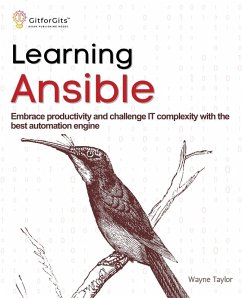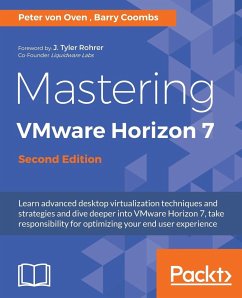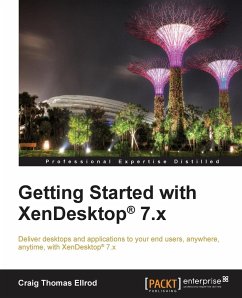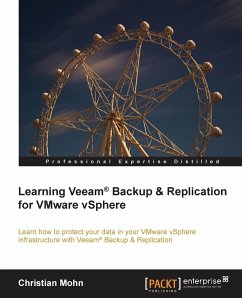
Ansible for Real-Life Automation
A complete Ansible handbook filled with practical IT automation use cases

PAYBACK Punkte
21 °P sammeln!
Learn how to automate and manage your IT infrastructure and applications using Ansible Key Features:Develop Ansible automation use cases by automating day-to-day IT and application operations Use Ansible to automate private and public cloud, application containers, and container platforms Improve your DevOps workflow with Ansible Book Description: Get ready to leverage the power of Ansible's wide applicability to automate and manage IT infrastructure with Ansible for Real-Life Automation. This book will guide you in setting up and managing the free and open source automation tool and remote-ma...
Learn how to automate and manage your IT infrastructure and applications using Ansible Key Features:Develop Ansible automation use cases by automating day-to-day IT and application operations Use Ansible to automate private and public cloud, application containers, and container platforms Improve your DevOps workflow with Ansible Book Description: Get ready to leverage the power of Ansible's wide applicability to automate and manage IT infrastructure with Ansible for Real-Life Automation. This book will guide you in setting up and managing the free and open source automation tool and remote-managed nodes in the production and dev/staging environments. Starting with its installation and deployment, you'll learn automation using simple use cases in your workplace. You'll go beyond just Linux machines to use Ansible to automate Microsoft Windows machines, network devices, and private and public cloud platforms such as VMWare, AWS, and GCP. As you progress through the chapters, you'll integrate Ansible into your DevOps workflow and deal with application container management and container platforms such as Kubernetes. This Ansible book also contains a detailed introduction to Red Hat Ansible Automation Platform to help you get up to speed with Red Hat AAP and integration with CI/CD and ITSM. What's more, you'll implement efficient automation solutions while learning best practices and methods to secure sensitive data using Ansible Vault and alternatives to automate non-supported platforms and operations using raw commands, command modules, and REST API calls. By the end of this book, you'll be proficient in identifying and developing real-life automation use cases using Ansible. What You Will Learn:Explore real-life IT automation use cases and employ Ansible for automation Develop playbooks with best practices for production environments Approach different automation use cases with the most suitable methods Use Ansible for infrastructure management and automate VMWare, AWS, and GCP Integrate Ansible with Terraform, Jenkins, OpenShift, and Kubernetes Manage container platforms such as Kubernetes and OpenShift with Ansible Get to know the Red Hat Ansible Automation Platform and its capabilities Who this book is for: This book is for DevOps and systems engineers looking to adopt Ansible as their automation tool. To get started with this book, basic knowledge of Linux is necessary, along with an understanding of how tasks are done the manual way before setting out to automate them.














